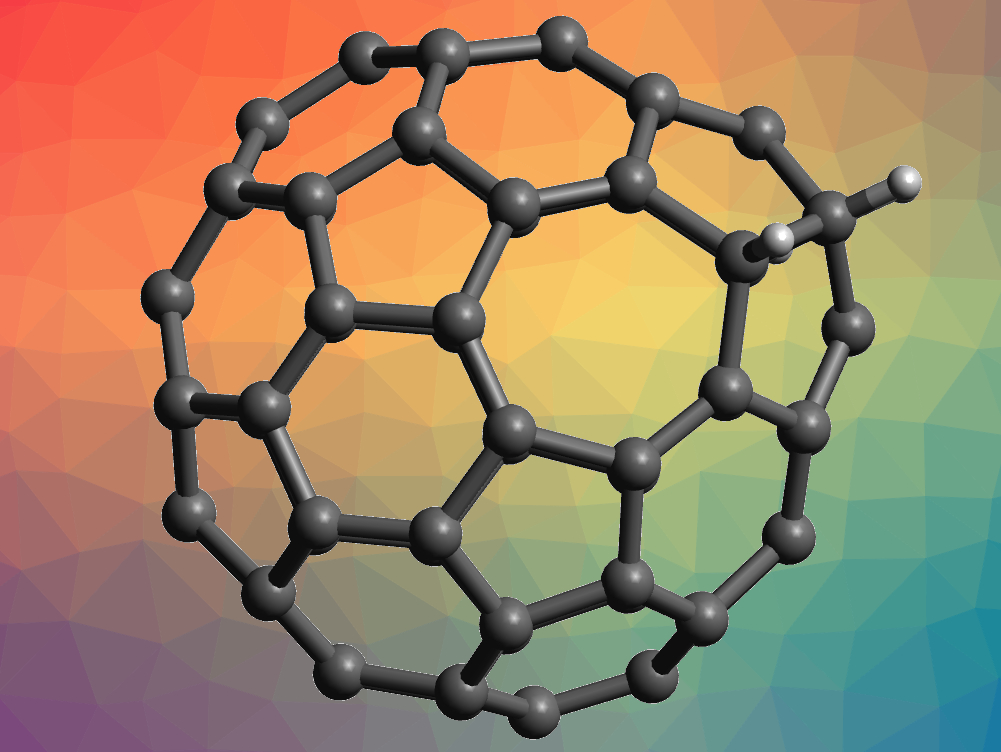Soot produced during combustion contains a complex mixture of carbon species. The soot’s composition changes with the combustion conditions. Fullerenes, for example, can be synthesized by a combustion process at low pressure. However, the process is not completely understood and not all fullerene components in soot are known.
Qianyan Zhang, Shun-Liu Deng, Su-Yuan Xie, and colleagues, Xiamen University, China, have found an unprecedented hydrofullerene structure (C66H4, pictured) in soot from the low-pressure combustion of benzene and acetylene. The soot from the combustion was extracted using toluene and the components were separated using high-performance liquid chromatography (HPLC). C66H4 was characterized using mass spectrometry (MS) and X-ray crystallography.
C66H4 has a C2v symmetry and contains two pairs of fused pentagons as well as two heptagons, which are unusual in fullerene species. The strain in the cage induced by the fused pentagons is relieved by the hydrogenation, which changes the hybridization of four carbon atoms from sp2 to sp3, and by the neighboring heptagons. Most heptagon-containing fullerenes known so far were synthesized via chemical modifications of conventional fullerenes. C66H4 is the first fullerene cage with two heptagons detected after growth in a combustion process.
- An Unconventional Hydrofullerene C66H4 with Symmetric Heptagons Retrieved in Low-Pressure Combustion,
Han-Rui Tian, Miao-Miao Chen, Kai Wang, Zuo-Chang Chen, Chao-Yong Fu, Qianyan Zhang, Shu-Hui Li, Shun-Liu Deng, Yang-Rong Yao, Su-Yuan Xie, Rong-Bin Huang, Lan-Sun Zheng,
J. Am. Chem. Soc. 2019.
https://doi.org/10.1021/jacs.9b01638




